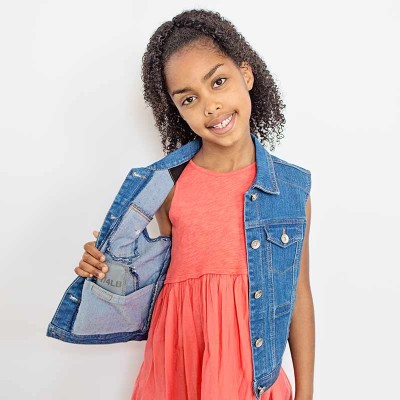If you and I were talking and then I step back, would you remain in place or move closer? Picking up on non-verbal cues can be challenging. Some kids and even adults will keep moving closer, unaware it can be experienced as an invasion of the other's personal space.
Here are several strategies to help kids build awareness and respect for boundaries that can be hard to see:
1. Body Space
So where does my body end and yours begin? And how do I know what's an appropriate distance? Body awareness can be innate but for many, it must be taught. Using playful tools such as a tunnel, resistance band, space explorer or even a swing can help increase proprioceptive awareness of where your body is in space, and the movement of muscles and joints.
2. Desk Space
If you're a teacher in a classroom or a parent at home, it's important to help kids carve out their own space to learn. Desk carrels can increase privacy and block visual distractions. Leave space between the desks or work areas, and mark a place for each chair.
3. Floor Space
When it's time to work on the floor, boundaries may disappear. Use spot markers, carpet squares, mats, or masking tape to help each individual stay in place and minimize accidental touching or jostling.
4. Transitions
Walking down a busy hall can be like driving a car on a highway that has no lane markers. For grounding, kids can take turns carrying a heavy item like a medicine ball or holding on to a rope. Challenge kids to imitate a certain footstep or walk like a soldier or soft clap after every other step. Remind everyone to keep their hands in their pockets or at their sides, maintaining focus.
5. Waiting in Line
It's not always easy waiting for that drink of water. But much like transitions, waiting can be managed with physical boundaries that are easy on the eye, like colorful gel tiles or a line marker. Remind kids how far apart to stand: "To be cool, an arm's length is the rule."
6. Sleeping Spaces
Bedtime is a great opportunity to reinforce awareness of personal space. The bed itself serves as a boundary and can be further enhanced with a privacy pop tent. Add a weighted blanket or snuggle sheet or hug sleeping bag for deep proprioception.
7. Sports
Exercise can hone that muscle-mind connection. Sports like gymnastics, dance, karate and rock climbing can significantly improve muscle control and awareness. Group sports can play an important role in learning about personal boundaries in a team environment.
You can help yourself and others become aware of personal space with these strategies. For sensory seekers or under responders, it can take time and practice to understand where their space ends and yours begins. Be patient, be gentle and be aware.
Check out our collection of floor tiles and spot markers to teach personal space.
Do you have any comments, questions or ideas? We love to hear your thoughts! Share with us in the comments, at social@funandfunction.com, or on our social media pages!
























Comments